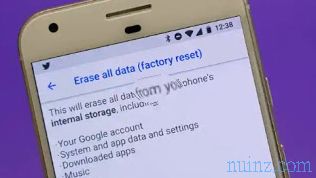Amazon Alexa has quickly become one of the most complete voice assistants to manage home automation devices, given the presence of numerous configurable skills and routines. Among the most popular features we certainly find the ability to control our TV even without a remote control, launching voice commands from one of the Amazon Echo devices in the home or from the Alexa app for mobile devices.
In this guide we will show you how to connect Alexa to your TV and manage it via voice commands, so you don't have to look for the remote control every time to turn up the volume, change the channel or turn off / on. We will show you both how to configure Alexa on modern Smart TVs natively compatible with the voice commands of the Amazon assistant and how to gain control over Smart TV models or classic televisions via universal IR remote control.
READ ALSO: Hear the sound of TV (with FireTV) on Amazon Echo
To connect Alexa on these televisions, simply open the TV menu and search for the item or the Amazon Alexa app (it varies a lot depending on the manufacturer chosen), log in with the manufacturer's account (if we do not have one there you will be asked to create one on the fly) and finally choose a name to assign to the Smart TV.

Once the TV is registered on the manufacturer's account, we will have to open the Amazon Alexa app on our mobile device (the app is available for Android and iPhone / iPad), log in with our Amazon account (if we don't have it already done), press the top left on the menu with the three horizontal lines, open the Skill and games menu and use the magnifying glass button at the top right to search for the specific skill for the manufacturer of our Smart TV .
Below we have collected all the skills that we can install on our Amazon account to enable voice commands for compatible Smart TVs:
With these skills we will surely be able to control the volume, change the channel (even if often just go back and forth, without the possibility of selecting a specific number or channel name), turn on and off, activate or deactivate the mute and select a specific source, by speaking the voice commands to our Amazon Echo or using the Fire TV Stick remote control .
NOTE: Alexa is natively integrated on the Fire TV Stick, therefore, if you have a traditional TV, just buy a Fire TV Stick to have Alexa and all the apps on the TV
To learn more, we recommend reading the official guides of the various Smart TV manufacturers, available in the list below:

By placing this small device near the TV (possibly in sight of the infrared sensor dedicated to the remote control) we will be able to control the main functions of the TV as if we had a classic universal remote control. We first install the BroadLink app on our smartphone or tablet (the app is available for Android and iPhone / iPad), create a free BroadLink account and configure the universal controller, ensuring access to our Wi-Fi network and using one of the profiles available according to the TV in use (just indicate the manufacturer of the TV and press the keys indicated by the app to replicate the control code).
Now that the controller is configured to "control the TV", we open the Amazon Alexa app on our smartphone or tablet, press the menu with the three lines at the top left, open the Skill and games menu and look for the BroadLink skill (available also from web browser).
Open the skill screen we insert the login credentials for the BroadLink account created previously, so that we can add our TV to the devices controllable by Alexa .
The voice commands will be translated into IR impulses, so that you can control any TV, replicating the basic functions such as volume control, channel switching (also by saying the numbers or channel names), activating or deactivating the appliance and managing the mute .
NOTE : the universal controller is compatible with any infrared-controlled device such as air conditioners, decoders and set-top-boxes.
If we do not know how to connect our Smart TV to the Internet to access voice commands or multimedia apps, we recommend reading our two guides How to connect the Smart TV to the Internet and How to have the Internet on the TV .
If instead we wanted to choose a new Smart TV, we will have to make sure that it has all the requirements and that it supports Alexa's voice commands, as described in our in-depth article How to choose and buy the best Smart TV .
In this guide we will show you how to connect Alexa to your TV and manage it via voice commands, so you don't have to look for the remote control every time to turn up the volume, change the channel or turn off / on. We will show you both how to configure Alexa on modern Smart TVs natively compatible with the voice commands of the Amazon assistant and how to gain control over Smart TV models or classic televisions via universal IR remote control.
READ ALSO: Hear the sound of TV (with FireTV) on Amazon Echo
Control TV via Amazon Alexa
If we have a Smart TV already compatible with Alexa, all we have to do is connect it to the Internet and follow the instructions in the chapter below. If instead we have a Smart TV without Alexa support or an old TV, we will show you how to configure a universal infrared remote control compatible with Alexa, so you can still control our TV without remote control.Smart TV natively compatible with Alexa
Many modern Smart TVs integrate voice controls and can be interfaced with Amazon Alexa, so as to control most of their functions even without a remote control.To connect Alexa on these televisions, simply open the TV menu and search for the item or the Amazon Alexa app (it varies a lot depending on the manufacturer chosen), log in with the manufacturer's account (if we do not have one there you will be asked to create one on the fly) and finally choose a name to assign to the Smart TV.

Once the TV is registered on the manufacturer's account, we will have to open the Amazon Alexa app on our mobile device (the app is available for Android and iPhone / iPad), log in with our Amazon account (if we don't have it already done), press the top left on the menu with the three horizontal lines, open the Skill and games menu and use the magnifying glass button at the top right to search for the specific skill for the manufacturer of our Smart TV .
Below we have collected all the skills that we can install on our Amazon account to enable voice commands for compatible Smart TVs:
- LG Smart TV : LG ThinQ - Basic
- Sony Android TV : Sony's Android TV
- Samsung Smart TV : SmartThings
- Panasonic Smart TV : Panasonic TV
With these skills we will surely be able to control the volume, change the channel (even if often just go back and forth, without the possibility of selecting a specific number or channel name), turn on and off, activate or deactivate the mute and select a specific source, by speaking the voice commands to our Amazon Echo or using the Fire TV Stick remote control .
NOTE: Alexa is natively integrated on the Fire TV Stick, therefore, if you have a traditional TV, just buy a Fire TV Stick to have Alexa and all the apps on the TV
To learn more, we recommend reading the official guides of the various Smart TV manufacturers, available in the list below:
- Amazon Alexa on LG TVs
- Samsung Smart TV with Alexa
- Sony Android TV with Amazon Alexa
- Panasonic TV with Alexa
Integrate Alexa on all televisions (even non-smart)
If our Smart TV does not natively support Amazon Alexa or we have a non-smart TV, we can integrate Alexa using a Fire TV Stick (which already has Alexa installed) or a universal controller such as the BroadLink SmartHome RM Mini 3 (20 €).
By placing this small device near the TV (possibly in sight of the infrared sensor dedicated to the remote control) we will be able to control the main functions of the TV as if we had a classic universal remote control. We first install the BroadLink app on our smartphone or tablet (the app is available for Android and iPhone / iPad), create a free BroadLink account and configure the universal controller, ensuring access to our Wi-Fi network and using one of the profiles available according to the TV in use (just indicate the manufacturer of the TV and press the keys indicated by the app to replicate the control code).
Now that the controller is configured to "control the TV", we open the Amazon Alexa app on our smartphone or tablet, press the menu with the three lines at the top left, open the Skill and games menu and look for the BroadLink skill (available also from web browser).
Open the skill screen we insert the login credentials for the BroadLink account created previously, so that we can add our TV to the devices controllable by Alexa .
The voice commands will be translated into IR impulses, so that you can control any TV, replicating the basic functions such as volume control, channel switching (also by saying the numbers or channel names), activating or deactivating the appliance and managing the mute .
NOTE : the universal controller is compatible with any infrared-controlled device such as air conditioners, decoders and set-top-boxes.
Conclusions
Connecting Amazon Alexa to TV is relatively simple, especially if our TV already supports Amazon's voice assistant natively; in the case of Smart TV without support for non-smart TV, we can still use Alexa to control the TV using a small universal controller to connect to the Internet and configure with the app and with the specific skill, so that we can revolutionize the way we look television, using the remote control less and less.If we do not know how to connect our Smart TV to the Internet to access voice commands or multimedia apps, we recommend reading our two guides How to connect the Smart TV to the Internet and How to have the Internet on the TV .
If instead we wanted to choose a new Smart TV, we will have to make sure that it has all the requirements and that it supports Alexa's voice commands, as described in our in-depth article How to choose and buy the best Smart TV .
















